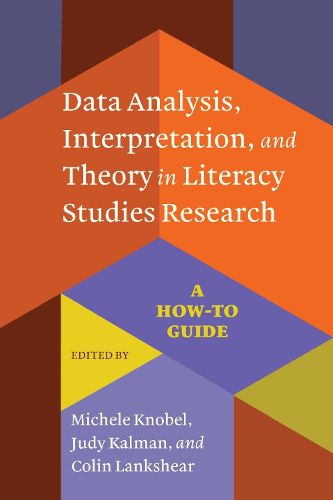Readings Newsletter
Become a Readings Member to make your shopping experience even easier.
Sign in or sign up for free!
You’re not far away from qualifying for FREE standard shipping within Australia
You’ve qualified for FREE standard shipping within Australia
The cart is loading…






This research guide addresses the difficulties novice and early career researchers often have with understanding how theory, data analysis and interpretation of findings hang together in a well-designed and theorized qualitative research investigation, as well as learning how to draw on such understanding to conduct rigorous data analysis and interpretation of their analytic results. Books that describe data analysis approaches and methods often fail to address the question of how to decide which ones are most appropriate for a particular kind of study, and why they are the best options. This book seeks to clarify these issues in a distinctive way. Chapter authors draw on a successful study they have undertaken and spell out their problem area, research questions, and theoretical framing, carefully explaining their choices and decisions. They then show in detail how they analyzed their data, and why they took this approach. Finally, they demonstrate how they translated or interpreted the results of their analysis, to make them meaningful in research terms. Approaches include interactional sociolinguistics, microethnographic discourse analysis, iterative coding, conversation analysis, and multimediated discourse analysis, among others. This book will appeal to beginning researchers and to literacy researchers responsible for teaching qualitative literacy studies research design at undergraduate and graduate levels.
$9.00 standard shipping within Australia
FREE standard shipping within Australia for orders over $100.00
Express & International shipping calculated at checkout
This research guide addresses the difficulties novice and early career researchers often have with understanding how theory, data analysis and interpretation of findings hang together in a well-designed and theorized qualitative research investigation, as well as learning how to draw on such understanding to conduct rigorous data analysis and interpretation of their analytic results. Books that describe data analysis approaches and methods often fail to address the question of how to decide which ones are most appropriate for a particular kind of study, and why they are the best options. This book seeks to clarify these issues in a distinctive way. Chapter authors draw on a successful study they have undertaken and spell out their problem area, research questions, and theoretical framing, carefully explaining their choices and decisions. They then show in detail how they analyzed their data, and why they took this approach. Finally, they demonstrate how they translated or interpreted the results of their analysis, to make them meaningful in research terms. Approaches include interactional sociolinguistics, microethnographic discourse analysis, iterative coding, conversation analysis, and multimediated discourse analysis, among others. This book will appeal to beginning researchers and to literacy researchers responsible for teaching qualitative literacy studies research design at undergraduate and graduate levels.